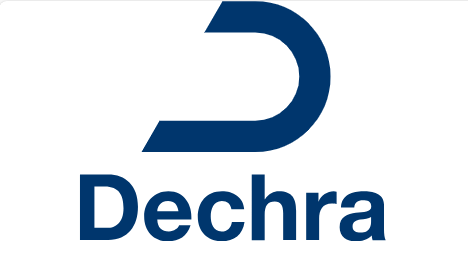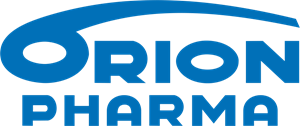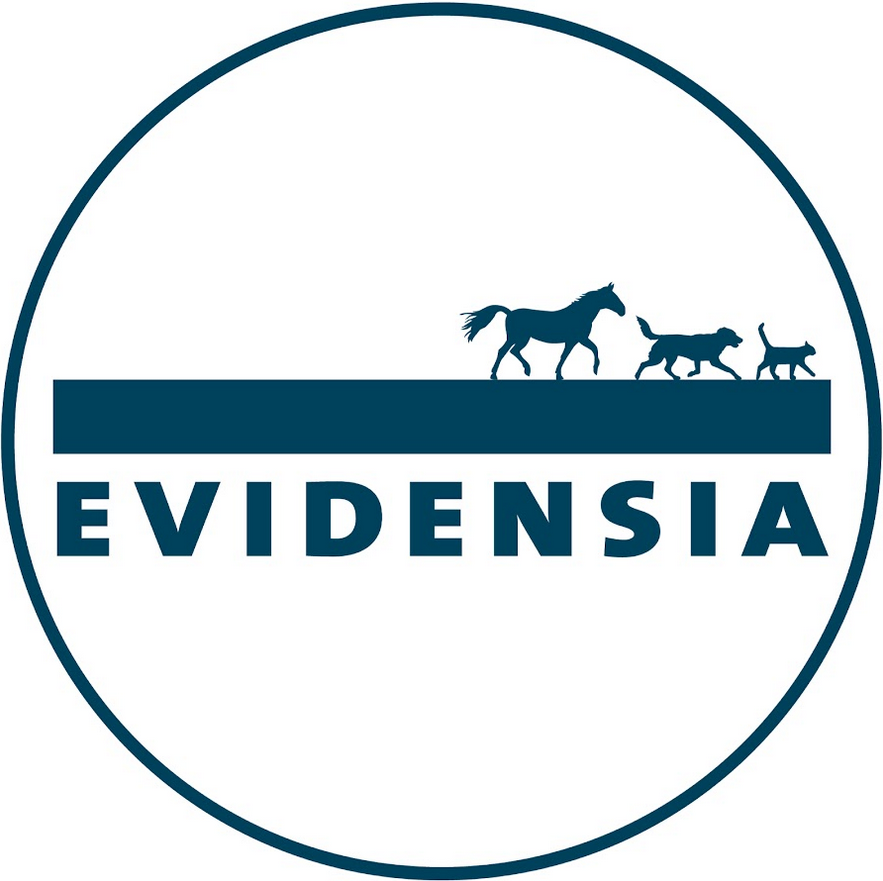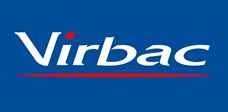Similar packages
Rifen vet.
Active substance
ATC code
Species
Horses, cattle, pigs
Indications
Horses
Diseases affecting the osteoarticular and muscular-skeletal system associated with acute pain and inflammation:
- Lameness of traumatic origin
- Arthritis
- Osteitis, spavin
- Tendinitis, bursitis
- Naviculitis
- Laminitis
- Myositis
Ketoprofen is also indicated for post-surgical inflammation, symptomatic therapy of colic and fever.
Cattle
Diseases associated with inflammation, pain or fever:
- Respiratory diseases
- Mastitis
- Osteoarticular and muscular-skeletal disorders such as lameness, arthritis
and to ease uprise post parturition
- Injuries
For the relief of post-operative pain associated with dehorning in calves.
Pigs
Diseases associated with inflammation, pain or fever:
- Treatment associated with the Postpartum Dysgalactia Syndrome/Mastitis Metritis Agalactia (MMA) Syndrome
- Respiratory tract infections
- Symptomatic treatment of fever
For the short-term relief of post-operative pain associated with minor soft tissue surgery such as castration in piglets.
Where necessary ketoprofen should be combined with appropriate antimicrobial therapy.
Dose to be administered and administration route
Horses: Intravenous use (i.v.)
Cattle: Intravenous or intramuscular use (i.v. or i.m.)
Pigs: Intramuscular use (i.m.)
To ensure a correct dosage, body weight should be determined as accurately as possible.
Horses:
2.2 mg ketoprofen/kg body weight/day intravenously once daily for up to 3 to 5 consecutive days, i.e. 1 ml per 45 kg body weight.
In order to treat colic one injection is normally sufficient. A second administration of ketoprofen requires a reassessment of the patient’s clinical status. See section 3.5, Special precautions for use.
Cattle:
3 mg ketoprofen/kg body weight/day intravenously or deep intramuscularly once daily for up to 3 consecutive days, i.e. 3 ml per 100 kg body weight.
For the relief of post-operative pain associated with dehorning the veterinary medicinal product should be administered as a single injection intravenously or deep intramuscularly 10 – 30 minutes before the procedure.
In cattle, the volume per injection site for i.m. injection should not exceed 9 ml. If the injection volume exceeds 9 ml, this volume should be divided into multiple doses, administered at different injection sites.
Pigs:
3 mg ketoprofen/kg body weight as a single deep intramuscular injection, i.e. 3 ml per 100 kg body weight (= 0.03 ml/kg).
For reduction of post-operative pain the veterinary medicinal product should be injected 10 - 30 minutes before surgical intervention. Particular care should be taken with regard to the accuracy of dosing including the use of an appropriate dosing device (i.e.: low dose syringe)
Adverse reactions
Horses, cattle, pigs:
| Very rare (<1 animal / 10,000 animals treated, including isolated reports): | Hypersensitivity reaction, Anaphylaxis1 . |
| Undetermined frequency (cannot be estimated from the available data): | Gastrointestinal irritation2 , Gastric ulceration2 , Small intestine ulcer2 ; Renal disorder2 ; Injection site irritation3 ; Inappetence4 . |
1 Anaphylaxis may be life-threatening and should be treated symptomatically.
2 Due to the mechanism of action of NSAIDs (inhibition of prostaglandin synthesis).
3 Transient, caused by intramuscular injections.
4 Only in pigs, due to repeated administration, reversible.
Reporting adverse events is important. It allows continuous safety monitoring of a veterinary medicinal product. Reports should be sent, preferably via a veterinarian, to either the marketing authorisation holder or its local representative or the national competent authority via the national reporting system. See the package leaflet for respective contact details.
Dispensing
POM-V - Prescription Only Medicine – VeterinarianSUMMARY OF PRODUCT CHARACTERISTICS
1. NAME OF THE VETERINARY MEDICINAL PRODUCT
Rifen 100 mg/ml solution for injection for horses, cattle and pigs
2. QUALITATIVE AND QUANTITATIVE COMPOSITION
1 ml contains:
Active substance: Ketoprofen 100 mg
Excipients:
Benzyl alcohol (E1519)10 mg
For the full list of excipients, see section 6.1.
3. PHARMACEUTICAL FORM
Solution for injection.
Clear, colourless to brownish-yellowish solution
4. CLINICAL PARTICULARS
4.1 Target species
Horse, cattle, pigs
4.2 Indications for use, specifying the target species
Horse
Diseases affecting the osteoarticular and muscular-skeletal system associated with acute pain and inflammation:
- Lameness of traumatic origin
- Arthritis
- Osteitis, spavin
- Tendinitis, bursitis
- Naviculitis
- Laminitis
- Myositis
Ketoprofen is also indicated for post-surgical inflammation, symptomatic therapy of colic and fever.
Cattle
Diseases associated with inflammation, pain or fever:
- Respiratory diseases
- Mastitis
- Osteoarticular and muscular-skeletal disorders such as lameness, arthritis and to ease uprise post parturition
- Injuries
For the relief of post-operative pain associated with dehorning in calves.
Pigs
Diseases associated with inflammation, pain or fever:
- Treatment associated with the Postpartum Dysgalactia Syndrome/Mastitis Metritis Agalactia (MMA) Syndrome
- Respiratory tract infections
- Symptomatic treatment of fever
For the short-term relief of post-operative pain associated with minor soft tissue surgery such as castration in piglets.
Where necessary ketoprofen should be combined with appropriate antimicrobial therapy.
4.3 Contraindications
Do not use in cases of hypersensitivity to the active substance, or to any of the excipients. Do not use in animals suffering from gastrointestinal lesions, haemorrhagic diathesis, impaired hepatic, renal or cardiac function. Do not use with other NSAID drugs concurrently or within 24 hours of each other.
4.4 Special warnings for each target species
Treatment of piglets with ketoprofen before castration reduces post-operative pain for 1 hour. To obtain pain relief during surgery co-medication with an appropriate anaesthetic/sedative is needed.
Treatment of calves with ketoprofen before dehorning reduces post-operative pain. Ketoprofen alone will not provide adequate pain relief during the dehorning procedure. To obtain pain relief during dehorning co-medication with an appropriate local anaesthetic is needed.
4.5 Special precautions for use
Special precautions for use in animals
Avoid intra-arterial injection. Do not exceed recommended dose or period of treatment. Special care should be taken when administering the product to animals with severe dehydration, hypovolaemia and hypotension as there is a potential risk of increased renal toxicity.
The use of ketoprofen is not recommended in foals under the age of 15 days. Use in animals less than 6 weeks of age or in aged animals may involve additional risk. If such use cannot be avoided, animals may require a reduced dosage and careful management. See point 4.7 regarding the use of the product in pregnant mares and sows.
Sufficient drinking water must be supplied at all times during treatment.
In colic, a subsequent dose may be given only after a thorough re-examination.
Special precautions to be taken by the person administering the veterinary medicinal product to animals
In case of accidental self-injection, seek medical advice immediately and show the package leaflet or the label to the physician. People with known hypersensitivity to ketoprofen or benzyl alcohol should avoid contact with the veterinary medicinal product.
Avoid splashes on the skin and eyes. Rinse thoroughly with water should this occur. If irritation persists seek medical advice. Wash hands after use.
4.6 Adverse reactions (frequency and seriousness)
Due to the mechanism of action of NSAIDs (inhibition of prostaglandin synthesis), gastric and intestinal irritation or ulceration or renal intolerance may occur even after appropriate use.
Intramuscular injections may occasionally cause transient irritation.
Repeated administration to pigs may result in reversible inappetence.
In very rare cases, hypersensitivity reactions may occur. Such reactions may evolve to a more severe condition (anaphylaxis), which may be life-threatening and should be treated symptomatically.
The frequency of adverse reactions is defined using the following convention:
- very common (more than 1 in 10 animals treated displaying adverse reaction(s))
- common (more than 1 but less than 10 animals in 100 animals treated)
- uncommon (more than 1 but less than 10 animals in 1,000 animals treated)
- rare (more than 1 but less than 10 animals in 10,000 animals treated)
- very rare (less than 1 animal in 10,000 animals treated, including isolated reports).
4.7 Use during pregnancy, lactation or lay
Pregnancy:
The safety of ketoprofen has been investigated in pregnant laboratory animals and cattle and no adverse effects were noted. The product can be used in pregnant cows. In absence of studies on pigs use only according to the benefit/risk assessment by the responsible veterinarian. Do not use in pregnant mares.
Lactation:
Can be used in lactating cows.
4.8 Interaction with other medicinal products and other forms of interaction
The product must not be administered in conjunction with, or within 24 hours of administration of other NSAIDs and glucocorticoids. Concurrent administration of diuretics, nephrotoxic drugs and anticoagulative drugs should be avoided.
Ketoprofen is highly bound to plasma proteins, and may displace or be displaced by other highly protein bound medicines, such as anticoagulants with the possibility of consequent toxic effects due to the unbound fraction of the drug. Due to the fact that ketoprofen may inhibit platelet aggregation and cause gastrointestinal ulceration, it should not be used with other medicines that have the same profile of adverse drug reactions.
4.9 Amounts to be administered and administration route
Horse:
2.2 mg ketoprofen/kg body weight/day intravenously once daily for up to 3 to 5 consecutive days, i.e. 1 ml per 45 kg body weight.
In order to treat colic one injection is normally sufficient. A second administration of ketoprofen requires a reassessment of the patient’s clinical status. See point 4.5, Special precautions for use.
Cattle:
3 mg ketoprofen/kg body weight/day intravenously or deep intramuscularly once daily for up to 3 consecutive days, i.e. 3 ml per 100 kg body weight.
For the relief of post-operative pain associated with dehorning the product should be administered as a single injection intravenously or deep intramuscularly 10 – 30 minutes before the procedure.
In cattle, the volume per injection site for IM injection should not exceed 9 ml. If the injection volume exceeds 9 ml, this volume should be divided into multiple doses, administered at different injection sites.
Pigs:
3 mg ketoprofen/kg body weight as a single deep intramuscular injection, i.e. 3 ml per 100 kg body weight (= 0.03 ml/kg).
For reduction of post-operative pain the product should be injected 10 - 30 minutes before surgical intervention. Particular care should be taken with regard to the accuracy of dosing including the use of an appropriate dosing device (i.e.: low dose syringe) and proper determination of body weight.
4.10 Overdose (symptoms, emergency procedures, antidotes), if necessary
Overdose with NSAIDs can lead to gastrointestinal ulceration, loss of proteins, hepatic and renal impairment. In tolerance studies performed in pigs up to 25 % of the animals treated at three times the maximum recommended dose (9 mg/kg) for three days or at the recommended dose (3 mg/kg) for triple the maximum recommended time (9 days) showed erosive and/or ulcerative lesions in both the aglandular (pars oesophagica) and glandular parts of the stomach. Early signs of toxicity include loss of appetite and pasty faeces or diarrhoea. If overdose symptoms are observed, symptomatic treatment should be initiated. The occurrence of ulcers is dose dependent to a limited extent.
4.11 Withdrawal period(s)
|
Meat and offal: |
|
|
Horse: IV |
1 day (24 hours) |
|
Cattle: IV |
1 day (24 hours) |
|
IM |
3 days (72 hours) |
|
Pigs: IM |
4 days |
Milk (cattle): Zero hours
Not authorised for use in mares producing milk for human consumption.
5. PHARMACOLOGICAL PROPERTIES
Pharmacotherapeutic group: anti-inflammatory and antirheumatic products, nonsteroids
ATC vet code: QM01AE03
5.1 Pharmacodynamic properties
Ketoprofen is a non-steroidal anti-inflammatory drug. In addition to the antiinflammatory effect, it also exerts an anti-pyretic and analgesic effect. The pharmacological mechanism of action of ketoprofen is based on the inhibition of the cyclo-oxygenase and lipoxygenase. Ketoprofen also prevents the formation of bradykinin and stabilises the cell membranes of lysosomes, which inhibits the release of lysosomal enzymes that mediate tissue destruction.
5.2 Pharmacokinetic particulars
Ketoprofen is rapidly absorbed after intramuscular administration. Maximum plasma concentration is reached within 30 to 60 minutes. Absolute bioavailability after intramuscular administration in cattle and pigs is 90 - 100%, in the horse 70%. The volume of distribution and clearance are approximately 0.17 L/kg and 0.3 L/kg respectively. Linear kinetics prevails.
The plasma half-life after intramuscular administration is 2 to 3 hours. Ketoprofen binds 95% to plasma proteins and is metabolised by reduction to the secondary alcohol. It is excreted rapidly, mainly via the urine i.e. 80% of the dose administered are eliminated within 12 hours. The reduced ketoprofen metabolite prevails in cattle, the glucuronidated conjugate in horses.
6. PHARMACEUTICAL PARTICULARS
6.1 List of excipients
- Benzyl alcohol (E1519)
- Arginine
- Citric acid monohydrate (for pH adjustment) - Water for injection
6.2 Major incompatibilities
In the absence of compatibility studies, this veterinary medicinal product must not be mixed with other veterinary medicinal products.
6.3 Shelf life
Shelf life of the veterinary medicinal product as packaged for sale: 3 years
Shelf life after first opening the immediate packaging: 28 days
6.4 Special precautions for storage
Keep the glass vial in the outer carton in order to protect from light.
After first opening the immediate packaging do not store above 25 °C.
6.5 Nature and composition of immediate packaging
50 ml, 100 ml, 10 x 50 ml, 10 x 100 ml
Amber glass vials type II, with bromobutyl rubber stopper type I and aluminium caps.
Not all pack sizes may be marketed.
6.6 Special precautions for the disposal of unused veterinary medicinal product or waste materials derived from the use of such products
Any unused veterinary medicinal product or waste materials derived from such veterinary medicinal product should be disposed of in accordance with local requirements.
7. MARKETING AUTHORISATION HOLDER
VetViva Richter GmbH
Durisolstrasse 14
4600 Wels Austria
8. MARKETING AUTHORISATION NUMBER
Vm 57446/5000
9. DATE OF FIRST AUTHORISATION
12 March 2010
10. DATE OF REVISION OF THE TEXT
January 2023 
Approved: 23 January 2023
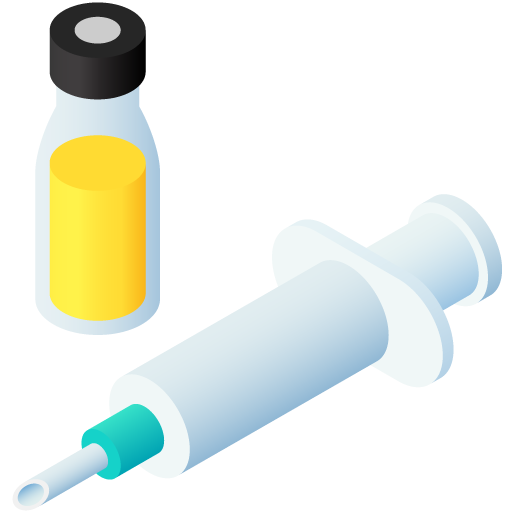
| Art. Nr. | 57446/5000 |
|---|
 TRUSTED SOURCE
TRUSTED SOURCE
